
- Home
- Age
- 1800-1849 (10)
- 1850-1899 (854)
- 1868 - 1912 (5)
- 1868-1912 (38)
- 1870-1930 (7)
- 1880-1912 (8)
- 1880-1920 (4)
- 1890-1910 (6)
- 19th Century (20)
- 20th Century (6)
- Ca 1900 (6)
- Circa 1920 (5)
- Early 20th Century (49)
- Late 19th Century (30)
- Meiji (16)
- Meiji Period (8)
- Post-1940 (350)
- Unknown (96)
- 1900 (10)
- 1900-1940 (645)
- ... (1940)
- Maker
- Ando (42)
- Ando Cloisonne (20)
- Ando Jubei (28)
- Ando Jubei Nagoya (7)
- Ando Workshop (22)
- Cloisonne (21)
- Gonda Hirosuke (6)
- Hiroaki Oota (8)
- Japan (36)
- Japanese (10)
- Japanese Craftsman (165)
- Kumeno Teitaro (9)
- Sato (28)
- Shuzo (9)
- Tamura (8)
- Unknown (192)
- Unknown Artist (15)
- Unmarked (5)
- Unsigned (21)
- Yamamoto (6)
- ... (3455)
- Material
- Style
- Theme
- Type
Experimental Imbedded Japanese Cloisonne Enamel Vase by Tamura
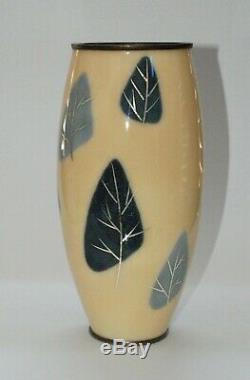
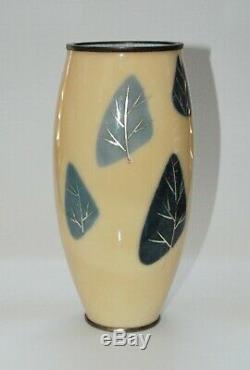
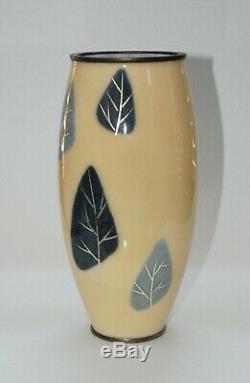

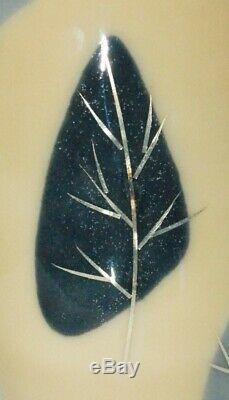
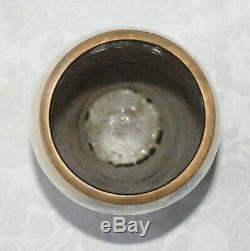
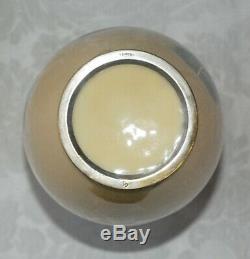
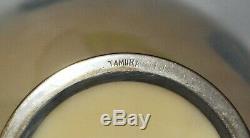
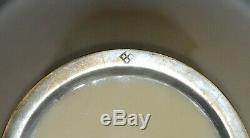
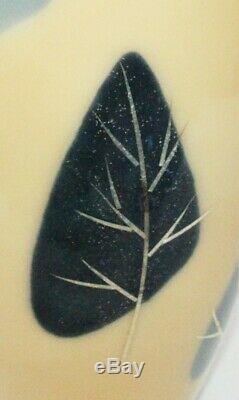
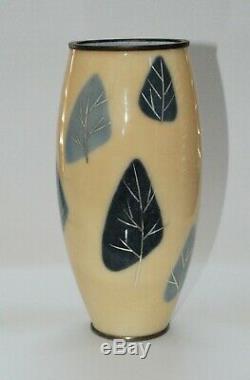


Here is an amazing experimental work leveraging pieces of silver to provide a stylized design of trees. I referred to this technique as embedded cloisonné. As many collectors know, any technique that can expose the underlying designs has proven to be far too susceptible to damage so very few examples appear to have survived over time. In this amazing example, the vase is simply decorated with stylized enamel forms that provide the shape of the tress.
On TOP of the enameled tree shapes, the artist applied the silver slivers and metallic powder that provides a magical snow like iridescence. The well known artist, Tamura, boldly used the yellow enamel ground for this work, which is probably one of the most difficult background enamel for an artist to incorporate due to the unforgiving nature and revealing characteristics of the color. Given the experimental nature of this work, there is one small area of the silver sliver representinga tree trunk that has been exposed to the surface of the vase. Despite this small area (see images) the overall condition is surprisingly good for this innovative technique. The height of the vase is approximately 9.75 inches. The width of the vase is approximately 5.5 inches. In my 30+ years of focused collecting, I have only seen handful of these imbedded metal slivers as part of the design and most of them were damaged, some significantly, but they clearly showed how the interesting but delicate technique was applied. However, this is the only piece that I have seen that also combined the use of metallic dust to create an irridescent snow like effect. In the reference book, in Chapter 6, entitled, Imbedded Cloisonne Enamels, I provided several examples where the artist has inset or formed non-traditional cloisons on the body of a work (pages 31 - through 40).Japanese Cloisonne Enamels; A Private Collectors Notes and Reference Guide, by Gary Yoshino. It is anticipated that these two specific artist marks (marks only) will be included in a future publication on Japanese cloisonne. Overall, an extremely rare example of imbedded cloisonne in excellent condition (despite the expected area where the underlying cloison has been exposed) signed by the Tamura workshop. Due to the fragile nature of Japanese cloisonné enamels, this vase will be double boxed and packed with tremendous care. The item "Experimental Imbedded Japanese Cloisonne Enamel Vase by Tamura" is in sale since Wednesday, August 12, 2020.
This item is in the category "Antiques\Asian Antiques\Japan\Vases". The seller is "gyassociates" and is located in Carlsbad, California. This item can be shipped to United States.
- Primary Material: Cloisonne
- Age: Post-1940
- Featured Refinements: Innovative Use of Silver Slivers
- Original/Reproduction: Vintage Original
- Region of Origin: Japan
- Maker: Tamura of Shippoten - Nagoya
- Color: Yellow Enamel Ground

